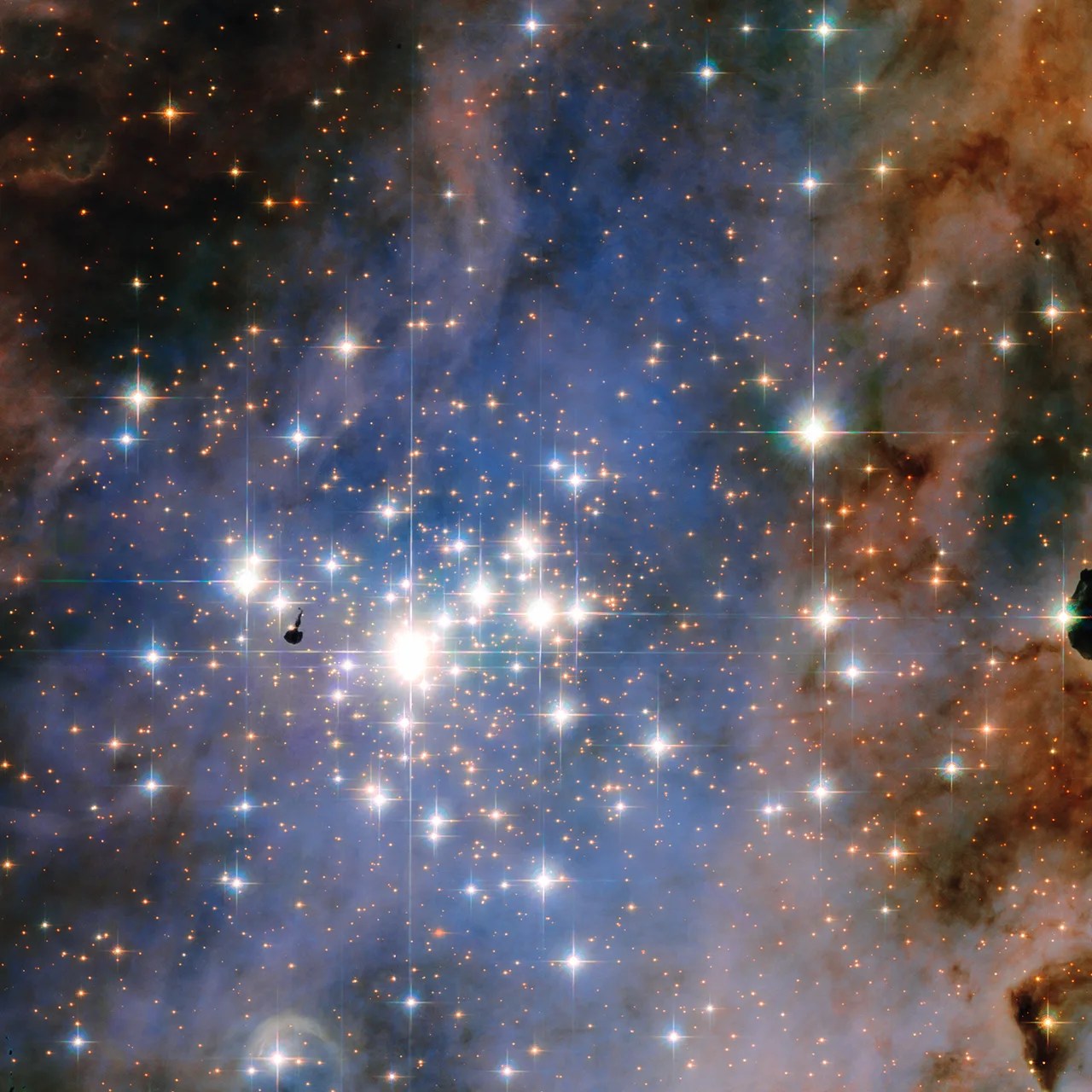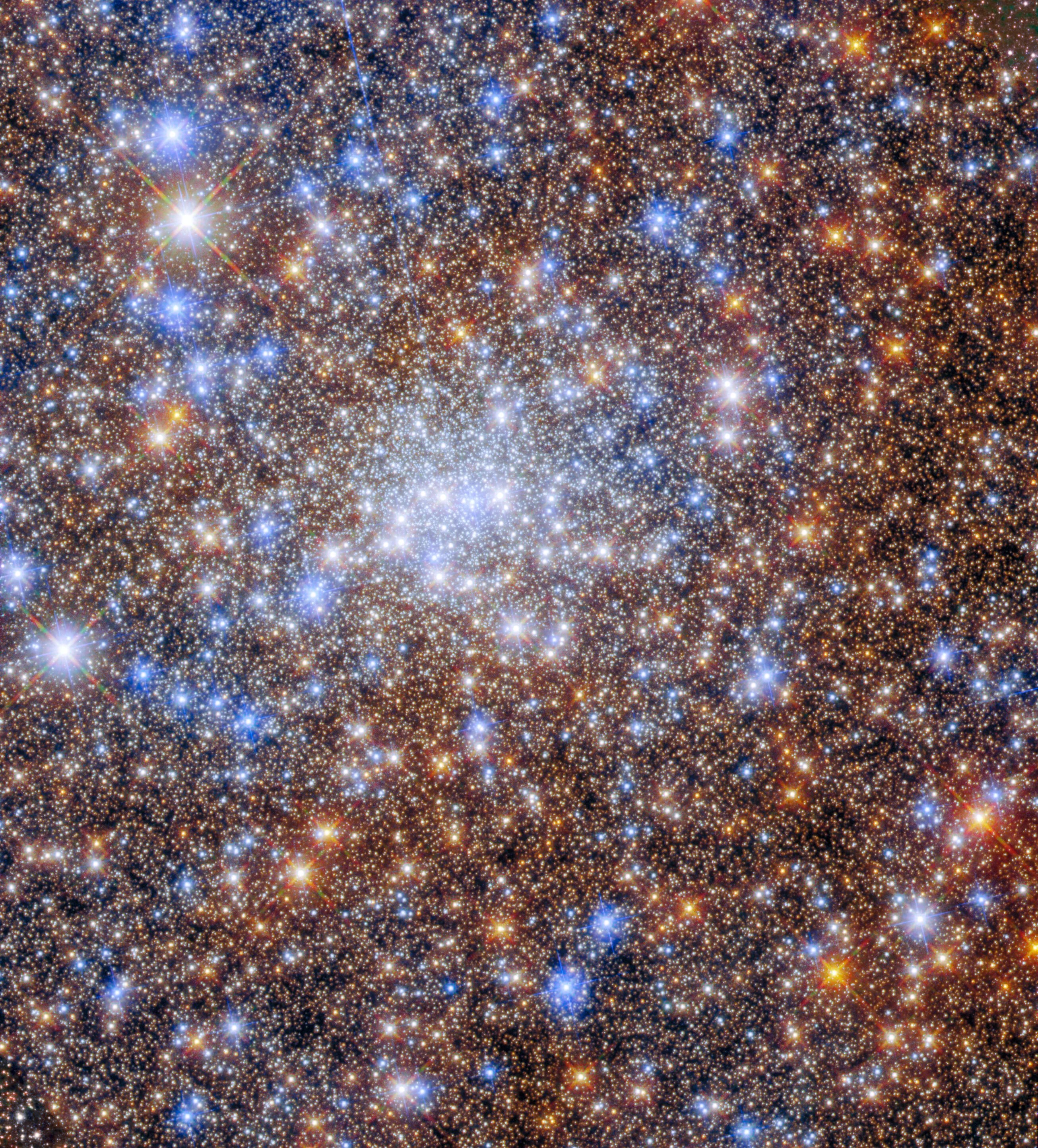Science
Hubble's Star Clusters
These jewels of the night sky offer us a glimpse at the lifecycle of stars.

Overview
Billions of trillions of stars illuminate the galaxies of our universe. Each brilliant ball of hydrogen and helium is born within a cloud of gas and dust called a nebula. Deep within these clouds, knots can form, pulling in gas and dust until they become massive enough to collapse under their own gravitational attraction. During the collapse, the center of the knot heats up to form a hot core called a protostar. The protostar continues to gather dust and gas, taking millions of years to mature into an adult star like our Sun. All the while, heat energy from the core provides enough outward pressure to keep the star from collapsing under the inward gravitational pressure of its own mass. In the hot core, thousands of quintillions of nuclear fusion reactions convert hydrogen atoms to helium atoms each second, giving off massive quantities of energy that make the star shine brightly.
Stars often form in groups or clusters from the same nebulae. Over time, the leftover dust and gas around a star blow away or form into other cosmic bodies like planets, asteroids, and comets. Gravity then pulls the young stars together, and they begin to orbit each other. Star clusters can contain as few as ten stars or as many as millions of stars. There are three main types of star clusters, and Hubble has imaged each of them over its three decades of operation.

Open Clusters
Open clusters contain between a few dozen and a few thousand stars, all formed from the same initial cloud of gas and dust. The density of stars is low enough in these clusters that individual stars are visible with a telescope, or sometimes the unaided eye, giving them an “open” appearance. Most open clusters reside in the arms of spiral galaxies, and their stars are usually relatively young. Their shape is more irregular than spherical, with large amounts of gas between the stars. Over time, as these clusters rotate around a galaxy, gravitational disruptions from passing cosmic objects can cause the stars to disperse. The Milky Way is home to more than a thousand of these clusters, and even our Sun may have formed in an open cluster.

Globular Clusters
Globular clusters are much larger and denser than open clusters, containing several thousand to millions of stars all formed from a shared nebula. Unlike open clusters, the density of stars at their centers is so high that individual stars are hard to discern, even with powerful telescopes. Globular clusters lie on the dusty outskirts of galaxies and their stars are older than those in open clusters. In fact, globular clusters contain some of the oldest known stars in a galaxy. Because old stars tend to have a reddish glow, globular clusters generally appear redder than open clusters.

The large number of stars in a relatively small area causes the shape of a globular cluster to appear spherical, as stars’ intense gravitational attraction pulls them together. These gravitational ties grant globular clusters more stability than open clusters, helping them keep their structure instead of breaking up over time. The Milky Way alone has over 150 globular clusters, and our nearest neighboring galaxy Andromeda has over 400.
Embedded Clusters
Embedded clusters are a precursor to open and globular clusters. As the youngest type of star cluster, they contain newly born and forming stars surrounded by cosmic gas and dust. As with open and globular clusters, all of the stars formed from the same initial nebula. Embedded clusters are likely the basic unit of star formation since a significant fraction of all stars form within them. Once star formation ends, embedded clusters resemble open clusters, but are often disrupted by passing objects due to their weaker gravitational bonds. The embedded phase typically lasts between 2-7 million years. Since embedded clusters are heavily obscured by dust, they are rarely observed in visible wavelengths of light. However, Hubble’s infrared instruments can detect the longer wavelengths of infrared light that aren’t as easily scattered by clouds of gas and dust. Hubble’s unique capabilities are essential for learning more about these young clusters.

Hubble’s Impact
Much of what scientists know today about stellar science has roots in Hubble’s three decades of observations. Astronomers use the telescope to study the composition of star clusters, how they evolve, and how gravity influences them. Hubble is also instrumental in distinguishing individual stars within a cluster and helped astronomers make early observations of white dwarfs – the dense, hot cores of stars that have exhausted their nuclear fuel – in a globular cluster. The telescope also expanded our understanding of stars known as blue stragglers, a type of star that can pull matter off of its neighbor, gaining extra fuel and burning brighter as a result. In 2021, Hubble data provided evidence supporting the existence of a collection of small black holes in the center of the globular cluster NGC 6397. Though contested, this evidence may provide support for the theory that the merger of small black holes is an important source of gravitational waves, which are only detected on Earth as a result of dramatic collision events like the ones occurring in NGC 6397.
Perhaps the most important piece of star cluster knowledge revealed by Hubble is that clusters can contain several generations of stars, making them far more complex than previously thought. Since the stars within a cluster likely form from the same cloud of gas and dust, discovering varying stellar ages within the same cluster has the potential to fundamentally alter our understanding of star formation. Future observations by Hubble will further the depths of our knowledge about star clusters, helping us to grasp the complexity, beauty, and remaining mystery of the stars illuminating our universe.
Hubble's Star Clusters Gallery
Explore More
Read about Hubble's latest discoveries.

Hubble Images a Grand Spiral
This NASA/ESA Hubble Space Telescope image features the glorious spiral galaxy NGC 5643, which is located roughly 40 million light-years…

NASA Successfully Integrates Roman Mission’s Telescope, Instruments
NASA’s Nancy Grace Roman Space Telescope team has successfully integrated the mission’s telescope and two instruments onto the instrument carrier,…

NASA’s Hubble Celebrates Decade of Tracking Outer Planets
Encountering Neptune in 1989, NASA’s Voyager mission completed humankind’s first close-up exploration of the four giant outer planets of our…





